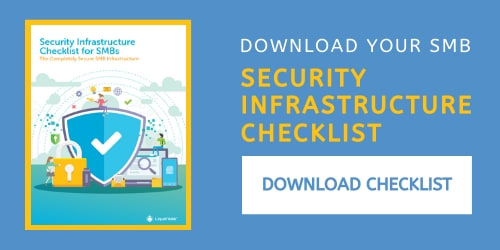
What is Cloud Monitoring?
Cloud monitoring is the process of gathering data about the health and upkeep of infrastructure resources and then using that data to make decisions about the management and administration of those resources.
Just as an automobile has a dashboard that displays information about the various systems in the car like the level of gasoline or speed, cloud monitoring tools gather information about servers, databases, and applications to give the monitor diagnostic details.”
Understanding cloud monitoring is a matter of understanding what can be monitored, how it is monitored, and what the benefits are from doing so. The cloud is complicated but monitoring your cloud infrastructure does not have to be.
This article will make it easy to understand how you should monitor your infrastructure to get the most out of your managed cloud server hosting.
Different Services to be Monitored in the Cloud
Monitoring cloud technology infrastructure can be wildly complex. There are many different types of services to be monitored and many different tools and configurations for doing so.
Practically every component that goes into working infrastructure can and should be monitored.
- Cloud databases and web servers should be monitored for uptime, memory and space utilization, and connectivity.
- Applications and websites should be monitored for uptime and availability.
- Containers, hypervisors, code repositories, and more are monitored to make sure not only that the infrastructure is working properly but also to guard against potential problems like intrusion and code sprawl.

How Cloud Monitoring Works
Cloud monitoring most often works by installing a piece of software, called an agent, in the component to be monitored. The agent then sends data back to the monitoring software which then presents it to the user.
Most often this presentation comes in two forms.
- Most monitoring tools present a dashboard so the user can visualize and work with any data or alerts produced by the tools.
- The data sent back from the monitoring agent talks to other software that then acts. For example, monitoring software may find that a database is offline.
The agent might notify the user via a monitoring dashboard but also, at the same time, tell another piece of software to perform an action like reverting to a backup database.
Different Cloud Monitoring Tools
There are hundreds of monitoring tools available for keeping an eye on virtualized infrastructure. From tools published by public cloud providers like Amazon Web Services, Microsoft Azure, and Google Compute Engine to third-party tools provided by companies like New Relic, Big Panda, and Hashicorp. When it comes to monitoring hybrid cloud environments, there are even more tools to consider.
Monitoring tools most often fit into the following four categories:
Performance Monitoring Tools
Performance monitoring tools exist to ensure that cloud tools are not only working properly but are also optimized to work at their best. Because of the complexity of cloud systems that rarely work in a silo, optimizing for performance across complex infrastructure is critical. From disc utilization to memory allocation, performance monitoring tools ensure that the infrastructure is performant and, if there is a problem, that problem is identified and addressed as quickly as possible.
Cost Optimization Monitoring Tools
A growing number of cloud monitoring tools exist to show users how much they are spending and, significantly, where there are areas of opportunity to reduce costs. From identifying cloud instances that are running but not being used to showing where databases could be consolidated or resized, cost monitoring and optimization tools are growing in adoption as more and more infrastructure is provisioned in the cloud.
Security Monitoring Tools
Cloud monitoring tools that focus on security are essential to operating cloud infrastructure. From intrusion detection to malware scanning, cloud security monitoring tools keep infrastructure safe.
Administration Monitoring Tools
Tools that help monitor administration allow the user to ensure that only authorized users are accessing the cloud infrastructure. Administration monitoring tools do more than simply confirm who has accessed the infrastructure; they also allow the user to see what changes have been made, by whom, when, and sometimes even for what purpose.
Benefits of Monitoring Your Cloud Infrastructure
Monitoring tools aren’t just about getting data in a vacuum, but rather about getting data that can inform decisions so that your infrastructure is working at peak levels. Consider that without cloud monitoring your infrastructure could be hacked, your website or applications could go offline, and your users could do whatever they like unchecked.
By using readily available monitoring tools, you can bring sanity and organization to even the most complex cloud deployments.”
Exact benefits are most easily found when looking at cost controls and improved security. True, the pay-per-use model of most cloud providers means that cloud infrastructure can be very cost-effective.
However, without monitoring which cloud services have been deployed, those cost benefits can easily turn into wasteful spending.
Additionally, without security monitoring, small intrusions can happen where you least expect them. Those small intrusions can lead to significant problems for your organization and your users.
Best Practices for Cloud Monitoring
As your cloud deployments grow, you’ll need to have a reliable monitoring framework in place.
For starters, choose a toolset that fits your needs now and can help you grow into the future.
Second, monitor not just the servers, databases, and other cloud components but also the way those components impact the user experience. A monitoring system that helps you make sense of the impact on actual users, customers, and clients will have a meaningful impact on your organization.
Start Cloud Monitoring Today
The best time to start monitoring your cloud deployments is the day you start working with the cloud. Failing that, the best time is as soon as possible.
If you need some assistance in understanding what you can be monitoring, what you should be monitoring, and what monitoring tools are best for your needs, contact our team at Liquid Web. For more than two decades, we’ve been the Most Helpful Humans in Hosting®. Whether you’re using traditional dedicated servers or diving into the cloud, our experience and expertise can put your monitoring concerns at ease.
Need help securing your entire infrastructure? Download your Security Infrastructure Checklist for SMBs
[ad_2]
Source link







